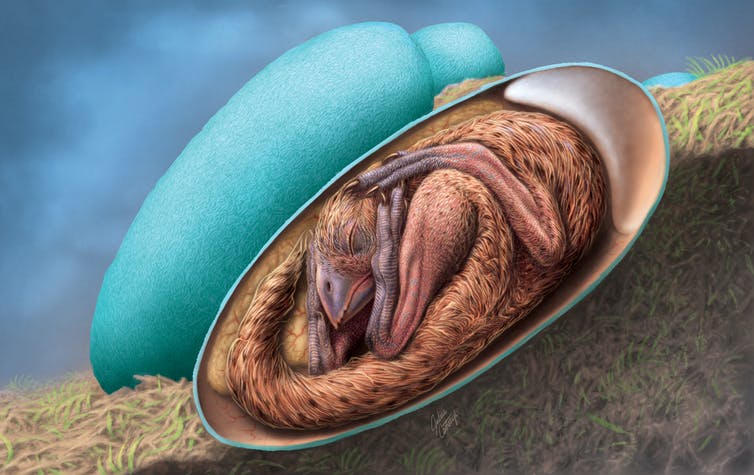OPINION
As you probably know, the word dinosaur is a portmanteau of the Greek words, deinos (terrible) and sauros (lizard). Which is exactly how the creatures were long regarded: gigantic lizards.
Part and parcel of that was the assumption that dinosaurs were ‘cold-blooded’ or, more correctly, ectothermic. That is, like modern-day lizards and snakes, they relied on outside sources of heat such as the sun to warm their bodies. We mammals, on the other hand, are homeothermic: our bodies generate and regulate heat internally.
Yet, it’s been known for over 50 years that the image of dinosaurs as sluggish cold-blooded reptiles was not entirely true. Even in the 19th century, some paleontologists concluded that at least some dinosaurs must have been agile and fast-moving creatures. The discovery of the bird-like dinosaurs such as Deinonychus antirrhopus, the inspiration for Jurassic Park’s Velociraptors, precipitated a major shift in thinking.
Even if the image of lizard-dinosaurs is so ingrained in the popular imagination that Jurassic Park completely inaccurately portrayed the (in reality) feathered Velociraptors as scaly lizards. That snotty kid at the start of the movie was right: they really were just big turkeys.
Nowadays, dinosaurs are classified under two genera: Ornithischia and Saurischia. The latter were indeed lizard-like, while the former were bird-like. ‘Warm’ blood and all.
The question resulting from that, then, is when did warm-bloodedness evolve? The answer, in the case of dinosaurs, is surprisingly early.
A new study in the journal Current Biology examined the spread of dinosaurs across different climates on Earth during the Mesozoic era, the ‘dinosaur era’, from 230 to 66 million years ago. The great, lizard-like sauropods (such as Brontosauros and Diplodocus) tended to remain firmly ensconced in warm climates. Meanwhile, the big predators like T. rex and the bird-like dinosaurs moved to colder climates by the Early Jurassic period.
This indicates that these dinosaurs were warm blooded by nearly 200 million years ago.
First author Dr Alfio Alessandro Chiarenza, of UCL Earth Sciences, said: “Our analyses show that different climate preferences emerged among the main dinosaur groups around the time of the Jenkyns event 183 million years ago, when intense volcanic activity led to global warming and extinction of plant groups.
“At this time, many new dinosaur groups emerged. The adoption of endothermy, perhaps a result of this environmental crisis, may have enabled theropods and ornithischians to thrive in colder environments, allowing them to be highly active and sustain activity over longer periods, to develop and grow faster and produce more offspring.”
The same environmental pressure that kept the big sauropods confined to warm climates probably also led to their huge size.
“Sauropods, on the other hand, which stayed in warmer climates, grew to a gigantic size at around this time – another possible adaptation due to environmental pressure. Their smaller surface area to volume ratio would have meant these larger creatures would lose heat at a reduced rate, allowing them to stay active for longer.”
Science Daily
Even before some dinosaurs became warm-blooded, though, another group of reptile-like creatures had long been evolving as well. As early as the Carboniferous Period (358.9 to 298.9 Mya), a distinct order of creatures called pelycosauria appeared. These were the archaic ancestors of mammals. By 205 Mya, the earliest true mammals had appeared – shrew-like creatures barely two inches long.
Their descendants would have to wait another 140 million years to assume the rulership of the Earth from the terrible lizards.

